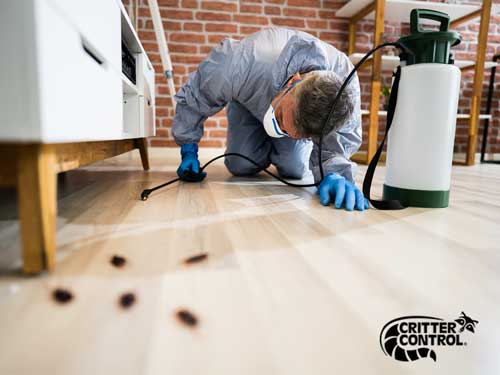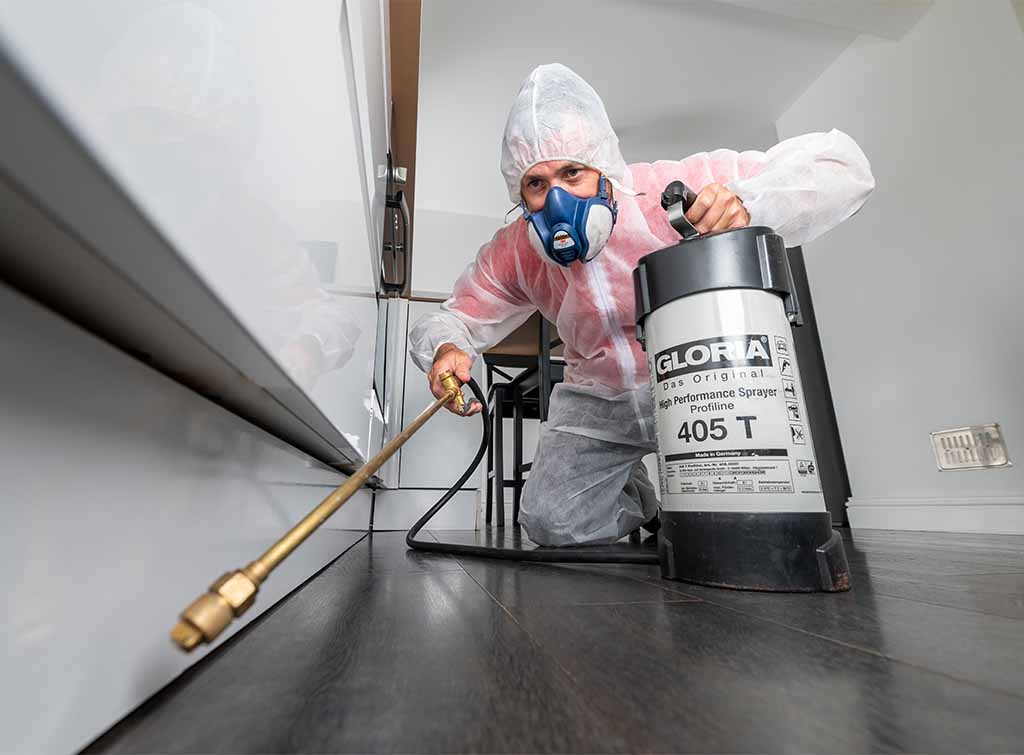Why Choose Pest Control Chicago LLC for Your Rat Removal Chicago Illinois Demands?
Wiki Article
Exploring Different Approaches and Strategies for Comprehensive Parasite Control in Residential Spaces
The landscape of insect control in property areas has developed considerably, demanding a thorough understanding of various techniques that can be utilized for efficient management. Standard chemical therapies, while effective, are progressively being complemented by eco-friendly choices and Integrated Bug Administration (IPM) methods. House owners should think about preventative measures, such as regular monitoring and precise pest identification, to maintain a healthy environment. The genuine difficulty exists in striking an equilibrium between efficacy and safety and security-- an exploration that discloses the subtleties of each strategy and its ramifications for lasting living.Comprehending Bug Control Basics
Efficient insect control is necessary for keeping a risk-free and healthy and balanced living atmosphere. Understanding the fundamentals of insect control involves recognizing the kinds of pests that generally invade residential spaces, the possible threats they posture, and the relevance of preventive procedures. Common family pests consist of rodents, insects, and other unwanted animals that can endanger hygiene, damages home, and cause health issues.A critical primary step in pest control is determining the certain parasites present. This can involve examining locations such as attic rooms, kitchen areas, and basements, where bugs are most likely to grow. Once recognized, it is essential to recognize their practices, breeding cycles, and favored atmospheres, which can notify proper control strategies.
Safety nets are basic to effective bug administration. These include sealing entry points, keeping sanitation, and lowering mess to get rid of hiding places. In addition, proper food storage space and waste monitoring can dramatically lower the attraction of a home for pests.

Standard Chemical Treatments
Amongst the different bug control approaches, conventional chemical treatments have long been utilized to address invasions in property spaces. These treatments commonly entail the application of chemical pesticides created to remove parasites such as insects, rodents, and various other unwanted microorganisms. The efficiency of these chemicals can vary, relying on the sort of bug, the solution of the chemical, and the technique of application.
Common classes of standard chemical treatments include insecticides, herbicides, rodenticides, and fungicides, each customized to deal with specific bugs. Insecticides, for instance, may target cockroaches, ants, or termites, while rodenticides are specifically created to regulate rodent populations. These chemicals are usually readily available in numerous kinds, consisting of granules, lures, and sprays, allowing property owners versatility in application.
Despite their efficiency, conventional chemical therapies raise worries concerning potential poisoning to human beings, pet dogs, and beneficial microorganisms in the setting. It is important for homeowners to carefully comply with application standards and safety and security precautions to decrease dangers. Integrated Pest Monitoring (IPM) approaches can enhance these treatments, ensuring a more alternative technique to pest control while optimizing efficiency and safety and security in property settings.
Eco-Friendly Bug Control Options
Green bug control alternatives are gaining appeal as home owners seek much safer and more lasting choices to typical chemical treatments. These techniques focus on the health of both citizens and the environment, minimizing the influence of pest control methods.One widely adopted eco-friendly technique is the use of natural repellents acquired from important oils, such as pepper mint and citronella. These oils not only hinder parasites but additionally provide positive aromas for interior spaces. Additionally, diatomaceous planet, a powder made from fossilized algae, serves as an all-natural pesticide by damaging the exoskeletons of pests upon get in touch with, leading to dehydration.
An additional effective strategy involves promoting biodiversity in yards and lawns. Presenting advantageous pests, such as lacewings and ladybugs, can naturally control pest populations (Preventative pest control services Chicago). Additionally, using catches made from naturally degradable materials can assist capture and remove parasites without creating harm to the ecosystem
Routine upkeep, such as sealing entrance factors and appropriate sanitation, further improves the performance of eco-friendly bug control. Home owners can take positive steps to stop infestations, ensuring an extra lasting living environment read the article while efficiently managing pest-related problems.
Integrated Pest Management Approaches
Implementing incorporated parasite management (IPM) techniques supplies an extensive method to pest control that emphasizes prevention and long-lasting options. IPM integrates numerous strategies, concentrating on comprehending bug habits, life cycles, and eco-friendly characteristics to lessen parasite populaces effectively. This multifaceted method prioritizes non-chemical methods, such as biological control, environment adjustment, and social techniques, to decrease reliance on chemicals.A fundamental facet of IPM is monitoring and identifying bugs properly. This entails regular inspections and the facility of activity thresholds to determine when treatment is necessary. By comprehending the specific pests affecting domestic atmospheres, targeted interventions can be utilized, lowering the chance of unneeded chemical applications.
An additional critical component of IPM is informing home owners about the relevance of cleanliness and maintenance methods. By fostering a setting that dissuades parasite problems-- such as securing entrance factors and managing wetness-- citizens can dramatically minimize the threat of parasite problems. Additionally, when chemical controls are regarded necessary, IPM supporters for the usage of the least hazardous alternatives to reduce environmental impact. Via these approaches, IPM not only addresses current parasite problems however also fosters sustainable methods that advertise lasting parasite management success.
Preventative Measures for Homes
To repel possible bug infestations, property owners must embrace a proactive method that emphasizes preventative actions. This begins with maintaining a orderly and clean space, as clutter and food debris draw in insects. Chicago wasp nest removal. Regularly vacuuming, sweeping, and wiping down surface areas can significantly minimize the threat of invasionsAdditionally, securing entry points is essential. Home owners ought to inspect windows, doors, and foundation fractures for gaps that could permit parasites accessibility to the home. Making use of caulk and weather removing can successfully obstruct these entrances.
Appropriate food storage is one more vital measure. Storing food in closed containers and promptly tidying up spills or crumbs helps deter rodents and pests.
In addition, handling outside environments can prevent insects from trespassing on household rooms. Property owners need to make sure that drainage systems are operating well, and Visit Your URL landscape design is kept neat. Trimming bushes and trees far from your home and eliminating standing water can even more lessen insect habitats.

Conclusion
In final thought, efficient bug control in household areas necessitates a multifaceted method that integrates conventional chemical therapies with eco-friendly methods and Integrated Parasite Monitoring strategies. By prioritizing preventative actions, such as keeping tidiness and sealing entry factors, property owners can significantly lower bug occurrences. Normal tracking and exact parasite recognition even more boost administration efforts. Inevitably, a balanced methodology that incorporates all-natural repellents and the very least toxic chemicals cultivates a risk-free and healthy living atmosphere while resolving pest-related obstacles.Understanding the fundamentals of pest control involves recognizing the types of parasites that frequently get into property areas, the prospective dangers they posture, and the importance of preventive procedures.An important initial step in bug control is determining the particular parasites present. Integrated Bug Management (IPM) techniques can complement these treatments, ensuring a more holistic technique to pest her explanation control while taking full advantage of efficacy and safety in residential settings.
Applying integrated pest administration (IPM) strategies offers a thorough approach to pest control that emphasizes prevention and long-term options.In verdict, effective bug control in property spaces demands a diverse technique that incorporates conventional chemical therapies with environment-friendly techniques and Integrated Insect Administration strategies.
Report this wiki page